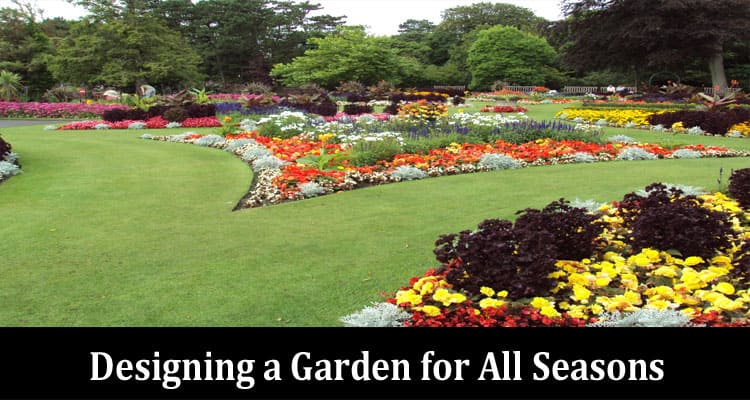When you are designing and planning your own garden, you need to think about all types of situations. This includes the climate where you live, the type of soil, lighting and fencing. You also need to think about hard work that is involved along with looking at what you have to work with. Planning and design for a successful garden is not a simple task because there are so many different factors involved, but there are methods that will help take away some of the difficulties associated with it.
Gardening all year round is challenging. You can be lucky if you have a greenhouse or a home where your yard gets sheltered from cold, harsh winds, snow and ice. Designing a garden that can adapt to all seasons requires some serious considerations. With the right know-how and planning, having a garden that serves you all year round is achievable.
Designing a Garden for All Seasons doesn’t have to be overwhelming. If you’re ready to make your garden the envy of all your neighbors, keep reading! We’ll walk you through everything you need to know about designing a garden that’s perfect for all seasons.
Assess the specific conditions of your garden
Designing a garden for all seasons requires an understanding of the specific conditions of your garden.
The best way to do this is by creating a map of your garden. This will help you visualize how much space you have and what type of plants would grow well in your area. You can also use a graph to show the amount of sunlight each area gets throughout the day, which will help you determine which plants need more or less light. This will help you choose plants that are best suited for your climate and region, so they will thrive in your garden year-round!
You need to consider the specific conditions of your garden, including the amount of sunlight that it gets, the soil type, and whether or not you have any natural barriers (such as trees) that will block out some light.
Here are some ways to make sure your garden can be used all year round:
- Use plants with hardy root systems so they can withstand colder temperatures.
- Plant trees with deciduous leaves in areas that get sun but don’t have much shade during the summer months. They’ll lose their leaves in the fall and winter so there will still be sunlight getting through to the ground floor plants underneath them!
- When planting perennials, consider where they’ll be in relation to one another when they bloom—will they block each other out? Or will they help each other grow by attracting pollinators like bees and butterflies?
Think about the time you have available for maintenance
When designing your garden, make sure you have enough space for the plants that you want. If you want more growing room then investing in some raised garden beds. There are many different types of bed and Frame It All have a great range to choose from, you can find their metal raised garden beds here. If you are planning to include garden beds in your yard, it’s important to consider how much maintenance they will require. Also think about the amount of water your plants will be need in order for your garden to thrive.
While it is possible for some plants to grow in containers, this option may not always be suitable as it can take longer for them to become established.
One way to think about this is by thinking about what time of year you have available to maintain your garden. If you have time during summer, then certain plants will be better than others because they need more attention when they are growing. If you only have time during winter, then some plants will be better than others because they require less maintenance at that time of year.
Pick plants native to you area
You want to make sure that whatever you plant has the ability to grow in different weather conditions. This is especially true if you live in an area where the weather changes dramatically between seasons.
If you’re planning on planting a garden that has multiple seasons of interest, it’s crucial to keep in mind that many plants are only able to survive in certain climates. In order to create a garden that stays beautiful year-round, choose plants that are native to your area so they’ll be accustomed to the climate and won’t need as much maintenance.
It’s also important to choose plants that are hardy enough for your region. You should research each plant before purchasing it so you know how much sun exposure it requires, how many hours of sunlight it requires per day, and how much water it needs.
Is a garden for all seasons right for you?
Hopefully, these tips have given you the inspiration and ideas that you need to create a unique and beautiful garden space in your home. Even if you don’t want to do a huge project, Just starting is the hardest part so get started with some of these ideas and you can scale up from there. There are many choices when it comes to plants make sure you know what you like and don’t like before you make your decision.


